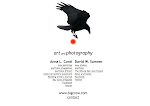
A few weeks ago I wrote about taking it easy, slowing down, making pictures the old fashioned way, the all manual, mechanical way. Well I've been practicing quite a bit, no auto focus or auto exposure, no auto advance, and I have to say I've really been enjoying myself.
There's a rhythm I'm back into that I hadn't realized I really missed. This is the way I was shooting in the 80s: small, light, manual and completely mechanical SLRs. There's a distinct rhythm to advancing the film, turning the focusing ring, checking the exposure, framing the image and squeezing the shutter release that isn't quite the same when working with the electronic, auto everything camera bodies.
Make no mistake, I love my F100 and will never give it up. But I work differently with it and I think I make a different kind of photograph with it than I do with my F2 and FM2 bodies. There's not a huge difference between the images I make with the different cameras, it's a subtle difference I can see and feel.
I'll be heading up to Seattle in a couple of weeks and I'm packing light. As you can see I'm taking an F2 and an FM2. I may add a 24mm lens to the bag but basically this is it: the two manual/mechanical bodies, 28mm, 35mm, 50mm and 135mm lenses, the hand-held light meter and about ten rolls of film. That will be my working kit for about ten days.
I'm going to try to pay close attention to how I work, to see if I'm more careful and a little more discriminating. I think I have been so far, I see it in my most recent images. But this will be a good test, being in a totally different environment, seeing new things with a fresh perspective. It will be exciting. It will be what photography should be, fun. I'm looking forward to that.
Photo: ©2011 David W. Sumner





